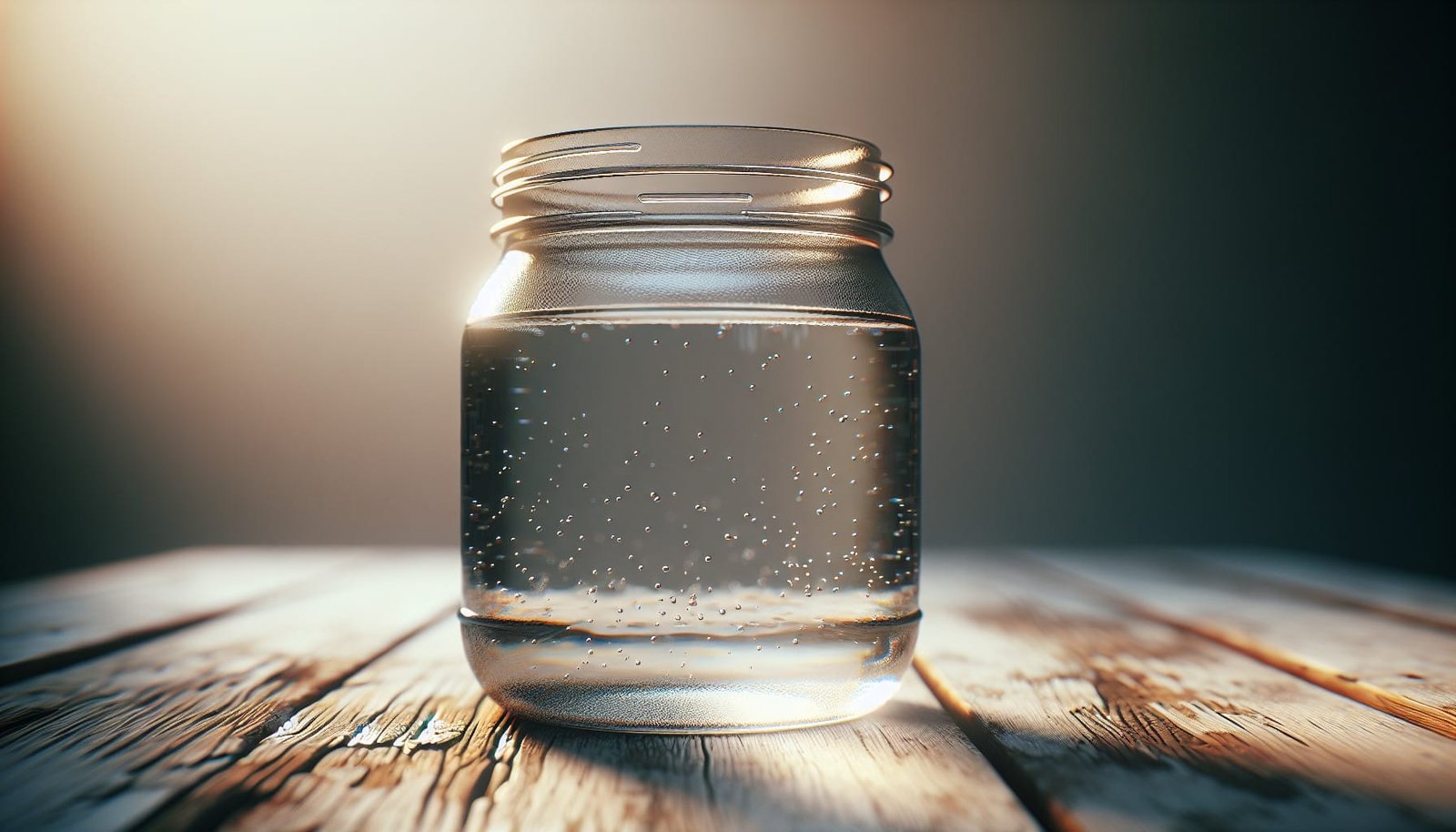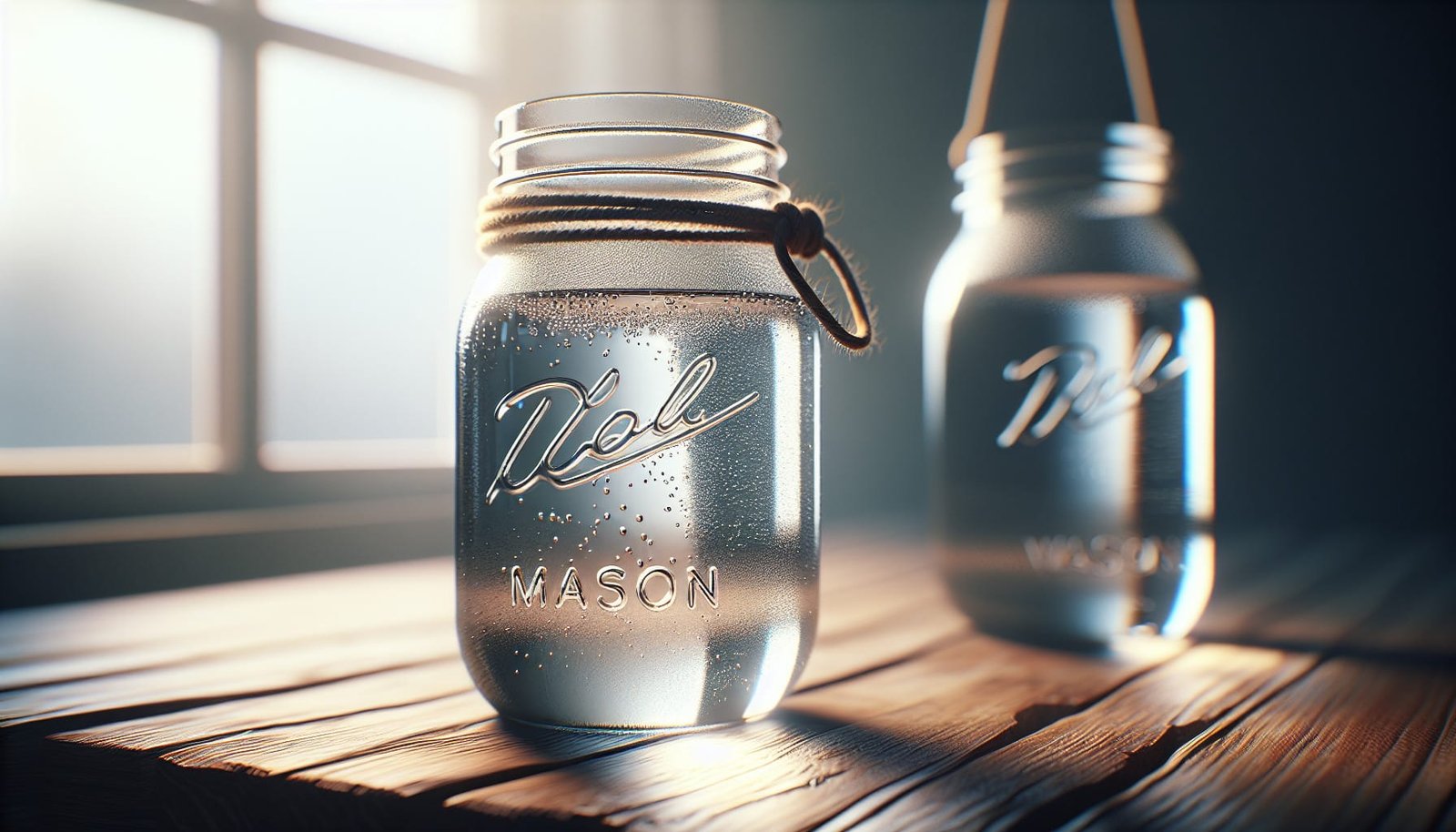Have you noticed your well water looking cloudy, milky, or discolored and aren’t sure what to do next?
What Should I Do If My Well Water Turns Cloudy?
If your well water has become cloudy, it can be unsettling. You want to know whether the change is harmless or a sign of something that may affect your health, plumbing, or well system. This guide walks you through how to assess the problem, take immediate steps, test and diagnose causes, and choose appropriate treatment or repair options.
Quick overview: Is cloudy water an emergency?
Cloudy water is not always an immediate emergency, but it can indicate issues that require prompt attention. The first step is to determine whether the cloudiness clears quickly (suggesting air), or persists/has other symptoms like odor, staining, or a change in taste (which can suggest contaminants).
Follow this article to learn how to troubleshoot, what tests to order, and when to call a professional.
Common types and appearances of cloudy well water
Cloudy water can look different depending on the cause. Recognizing the appearance helps you narrow down likely issues.
- Milky or white and clearing from the bottom up usually points to trapped air.
- Suspended grit or sand suggests sediment intrusion.
- Brown, orange, or reddish cloudiness often indicates iron or manganese.
- Greenish or slimy cloudiness might be algae or organic matter.
- Cloudy water with strong sulfur or sewage-like odor could point to bacterial contamination or hydrogen sulfide.
Understanding the visual clues helps you pick the right tests and next steps.

Immediate checks you can do at home
Before calling a professional, run a few simple checks you can do yourself. These will help you decide urgency and what samples to collect.
- Let a glass of water sit for 10–15 minutes. If it clears from the bottom up, trapped air is likely. If it settles with visible solids, sediment or sand may be present.
- Smell the water. Musty, rotten-egg, or sewage-like odors indicate possible contamination or hydrogen sulfide.
- Run hot and cold taps. If only hot water is cloudy, the problem may be in the water heater (sediment build-up, corrosion).
- Note whether cloudiness is constant, intermittent, or seasonal (after heavy rains).
These observations will guide which laboratory tests or professional inspections to pursue.
Causes of cloudy well water (detailed)
Cloudy well water has many potential causes. Breaking them down helps you identify the most likely issue for your situation.
Air in the water
Tiny air bubbles can make water look white or milky. This often happens after well pump servicing, pressure changes, or following a power outage. The bubbles usually rise and disappear within a few minutes or when water is poured into a glass.
You can confirm air by filling a clear glass and watching for clearing from bottom to top.
Sediment, sand, or silt
If your well has a damaged screen, deteriorating gravel pack, or shifting aquifer materials, sand and silt can enter the water. This produces grit and cloudiness and can be hard on pumps and fixtures.
Sediment often settles to the bottom of a glass, and you may notice sand in faucets or shower drains.
Iron and manganese
These minerals can cause cloudy, brownish, or reddish water. They often leave rust-colored stains on fixtures and laundry. Iron and manganese usually come from groundwater passing through mineral-rich formations.
They can also oxidize and form particles that make water look cloudy or turbid.
Microbial contamination
Bacteria, including coliforms, can make water look cloudy and may introduce unpleasant tastes or odors. Microbial contamination is a health concern, especially if E. coli is present.
Contamination can result from surface water entering the well, a compromised well cap, or cracks in the casing.
Hydrogen sulfide gas
Hydrogen sulfide produces a rotten-egg odor and can give water a cloudy or slightly yellow appearance. It often forms when sulfate-reducing bacteria break down sulfates in groundwater.
Although hydrogen sulfide in small concentrations isn’t usually dangerous, it’s unpleasant and corrosive to plumbing.
Organic material and algae
Organic matter from surface runoff or near-well vegetation can cause turbidity and discoloration. Algae growth inside holding tanks or storage systems can also create greenish cloudiness or sliminess.
Corrosion and plumbing problems
Corroded pipes or fittings can release minerals and particles that make water cloudy. This is more common in older plumbing systems and can involve lead or copper in some setups.
Water treatment system failures
If your household has filters, water softeners, or chemical treatment systems, failures or exhausted media can produce cloudy water or allow contaminants through.
Regular maintenance of treatment devices is essential to prevent cloudy water due to system issues.

How to test cloudy well water
Testing is the only way to know what’s causing the cloudiness and whether there are health risks. Below is a table summarizing the most useful tests, why you need them, and who typically performs them.
| Test | Why to order it | Who performs it |
|---|---|---|
| Bacterial analysis (Total coliform, E. coli) | Detects harmful microbes and indicates potential fecal contamination | Certified water testing lab |
| Turbidity (NTU) | Measures cloudiness quantitatively; helps track changes and treatment performance | Lab or some well professionals |
| Iron and manganese | Identifies mineral concentrations causing discoloration and staining | Lab |
| pH | Influences corrosion and treatment choices | Lab or home test kit |
| Total dissolved solids (TDS) | Indicates general mineral content; useful for treatment planning | Lab or home meter |
| Hardness (calcium, magnesium) | Determines need for softening and relates to scale and deposits | Lab |
| Sulfate and hydrogen sulfide | Checks for sulfur-related odor and potential corrosion | Lab |
| Nitrate/Nitrite | Assesses agricultural or septic contamination risk | Lab |
| Chloride and sodium | Useful for treatment design and assessing contamination | Lab |
| Heavy metals (lead, arsenic, copper) | If corrosion or industrial contamination is suspected | Lab |
Collect a sample following the lab’s instructions—sterile bottles and specific handling are often required, particularly for bacterial tests. Many county health departments and extension services can advise where to send samples.
Interpreting common test results
Once you have results, here’s how to interpret common findings:
- Air bubbles: Low turbidity, no bacteria, normal minerals → likely trapped air.
- Elevated iron/manganese with high turbidity and staining → metal oxidation; treatment with filtration/oxidation needed.
- High turbidity and positive coliform → potential surface contamination; treat with shock chlorination and retest, and inspect well integrity.
- High sulfates or hydrogen sulfide → consider aeration, activated carbon, or oxidation treatments.
- High TDS or hardness → consider softeners, RO systems, or blended solutions.
If results show E. coli or other harmful bacteria, do not drink the water until the problem is fixed and confirmed cleared by retesting.

Immediate actions to protect health
If bacterial contamination is suspected or confirmed:
- Stop drinking the water and any food preparation using the water. Use bottled water immediately.
- Boiling water for at least one minute (longer at high altitudes) kills bacteria, but boiling won’t remove chemicals, metals, or turbidity.
- Consider a point-of-use disinfectant (household bleach) only following public health or lab guidance.
- Contact your local health department for specific advisories and instructions.
If cloudiness is likely due to air or a temporary mechanical issue, you can often continue using the water for non-consumptive uses while monitoring the situation.
Step-by-step troubleshooting: what to do first
Follow these steps in order to troubleshoot safely and effectively:
- Observe and document—note when the cloudiness started, which taps are affected, and any smells or stains.
- Perform at-home checks—glass test for air vs. particles; hot vs. cold tap differences.
- Check recent activity—has the well been serviced, or have there been recent power outages, drilling, heavy rains, or nearby construction?
- Flush the system—run the faucet for 5–10 minutes to see if air pockets or temporary turbidity clear.
- Take pictures—visual records are helpful if you call a professional.
- Order water tests—start with bacterial testing and tests for iron, manganese, pH, and turbidity.
- If bacteria are present, use bottled or boiled water and call the health department and a well professional.
- If only minerals or sediment are present, investigate well equipment and consider filtration options.
This structured approach reduces guesswork and points you toward targeted remediation.

When to call a professional
You should contact a licensed well contractor, pump technician, or water treatment professional when:
- You detect bacteria in your well water.
- Cloudiness is accompanied by a strong odor, staining, or ongoing sediment flow.
- The problem persists after flushing.
- Your pressure tank, pump, or well casing may be damaged.
- You’re unsure how to collect an accurate water sample for lab testing.
- Treatment installation or well rehabilitation is required.
Choose professionals with proper licensing and solid references. Your local health department often maintains lists of certified well contractors and labs.
Repairs and well system issues that can cause cloudiness
If testing points to mechanical or structural problems, repairs may include:
- Replacing or repairing the well screen or casing to prevent sediment ingress.
- Fixing leaks or joint failures in the drop pipe that allow air or particles in.
- Replacing worn pump parts that cause cavitation and introduce air.
- Sealing the wellhead and installing a sanitary well cap to prevent surface contamination.
- Cleaning or rehabilitating the well if biofilm, mineral buildup, or sediment is present.
- Shock chlorination and subsequent flushing if bacterial contamination is found and well structure is intact.
A qualified well contractor can evaluate vibration, flow rates, and pump performance and recommend appropriate repairs.

Treatment options and how they address causes
Different causes require different treatments. The table below summarizes common treatment technologies and when they’re appropriate.
| Problem | Typical treatment(s) | Notes |
|---|---|---|
| Air bubbles | Fix pump or pressure tank; install vacuum/air eliminator | Often a mechanical correction; no filter needed |
| Sediment/sand | Sediment pre-filter, multimedia filters, sand separators | Protects downstream equipment; periodic backwashing |
| Iron (ferrous) | Oxidation (aeration), greensand or catalytic carbon filters, oxidation with chlorine followed by filtration | Type and concentration of iron determine method |
| Manganese | Similar to iron treatment; stronger oxidation often required | Manganese can foul filters; design matters |
| Hydrogen sulfide | Aeration, activated carbon, oxidizing filters (manganese greensand), chlorination | Small concentrations removed with carbon; larger require oxidation |
| Microbial contamination | Shock chlorination, continuous disinfection (chlorination), UV after filtration | Identify source; fix wellhead and seal well before long-term use |
| High hardness | Water softener (ion exchange), lime softening | Softening addresses scale and soap performance, not microbial risks |
| Heavy metals | Reverse osmosis, ion exchange, media-specific filters | Requires lab results for proper design |
Treatment should be selected and sized based on lab results and flow rates. Some solutions require regular maintenance (e.g., media replacement, backwashing, salt for softeners).
Disinfecting your well: shock chlorination
Shock chlorination can be effective for treating bacterial contamination if the well structure is sound and contamination source is temporary or resolved.
- It involves introducing a measured free chlorine solution into the well and distribution system to achieve a target chlorine residual, holding it for a period (often 12–24 hours), then flushing until chlorine is gone.
- Should only be done following guidance from your local health department or a qualified well professional.
- After treatment, let the lab retest for bacteria before resuming normal use.
If contamination recurs after chlorination, a structural problem or ongoing source of ingress needs repair.
Filtration and point-of-use devices
Point-of-use systems can provide safe drinking water while you repair or treat the main supply.
- Under-sink reverse osmosis units remove many dissolved contaminants, heavy metals, and reduce turbidity but produce wastewater and require maintenance.
- Point-of-use UV disinfectors provide microbial inactivation after proper prefiltration for turbidity.
- Countertop or pitcher filters can help with taste and minor particulates but are not adequate for bacterial contamination.
Always match the device to the contaminant profile and maintain filters as recommended.
Preventive maintenance to avoid cloudy water
Regular maintenance reduces the risk of cloudy water. Suggested items:
- Annual or semiannual water testing for bacteria, iron, TDS, and pH.
- Inspect the well cap and casing for cracks or damage.
- Keep hazardous materials, septic systems, and livestock away from the wellhead.
- Maintain drainage away from the wellhead—surface water is a common contamination source.
- Maintain pressure tanks, pumps, and treatment system service schedules.
- Schedule well rehabilitation if sand or sediment becomes a recurring problem.
A proactive plan often prevents emergencies and prolongs the life of well components and household appliances.
Cost considerations
Costs vary widely depending on the issue and chosen remedy. Below is a general estimate range to help you plan.
| Item | Typical cost range (USD) |
|---|---|
| Basic water test (bacteria + common minerals) | $25–$150 |
| Comprehensive lab panel (metals, organics) | $150–$400 |
| Well pump service call | $100–$300 (diagnostic only) |
| Pump repair or rebuild | $300–$1,500+ |
| Well rehabilitation (cleaning, shock) | $300–$2,000 |
| Sediment filter installation | $150–$800 |
| Whole-house iron filter/oxidizing system | $800–$4,000 |
| Water softener | $800–$3,000 |
| Reverse osmosis system (under-sink) | $400–$3,000 |
| New wellhead sealing/cap | $150–$500 |
Get multiple quotes for major work and verify contractor credentials. Costs can increase with depth, complexity, or if electrical/plumbing upgrades are needed.
Timeline: how long until your water is safe?
Timeframes depend on cause and chosen remedy:
- Air-related cloudiness: minutes to hours after flushing.
- Sediment from a temporary disturbance: hours to days after flushing and pump cycling.
- Shock chlorination for bacteria: after disinfection and adequate flushing, retest after 7–10 days to confirm results.
- Mechanical repairs (pump, screen): a few hours to several days depending on parts and access.
- Installing filtration systems: a few hours to a day.
- Well rehabilitation: from a day to several days for complex jobs.
Always confirm safety with lab tests when bacteria or contamination is suspected.
Checklist: what to do if your well water is cloudy
- Observe: note appearance, smell, which taps are affected.
- Test at home: glass test and hot vs. cold checks.
- Flushing: run taps for several minutes to see if it clears.
- Use safe water: bottled water if bacteria or strong odor present.
- Collect samples: follow lab instructions and send timely.
- Contact professionals: health department and licensed well contractors for positive bacterial tests or structural concerns.
- Repair and maintain: address root cause and schedule regular testing.
This checklist helps you act efficiently and safely.
Frequently asked questions
Can cloudy well water harm my plumbing?
Cloudy water itself may be harmless if caused by air, but sediment, iron particles, and corrosive water can shorten appliance life, clog fixtures, and stain surfaces. Addressing the underlying cause will protect your plumbing.
Is cloudiness the same as hardness?
No. Hardness refers to dissolved minerals (calcium and magnesium). Hard water does not usually appear cloudy on its own, though associated mineral precipitation can create turbidity in certain conditions.
Will boiling water make cloudy water safe?
Boiling kills most microbes but won’t remove suspended particles, minerals, or chemical contaminants. If cloudiness is due to microbes, boiling is a temporary mitigation; if due to chemicals or metals, boiling is not effective.
How often should I test my well?
Test annually for bacteria, nitrates, and pH at minimum. Test after any repairs, flooding, nearby construction, or if you notice changes in taste, smell, or clarity.
Resources and who to contact
- Your local county health department for testing guidance and lists of certified labs.
- State-certified water testing laboratories for accurate analyses.
- Licensed well contractors, pump technicians, and water treatment professionals for inspections and repairs.
- Extension services and university water programs often publish helpful guides for private well owners.
Keep contact numbers and lab information handy for quick action.
Final action plan: next steps you should take now
- Perform the at-home glass test and smell check.
- Flush affected taps for 5–15 minutes and observe.
- If any suspicion of bacteria or strong odor exists, stop using water for drinking and use bottled water.
- Collect and send water samples for bacteriological and mineral analysis as advised by your lab or health department.
- Call a certified well contractor if problems persist or tests show contamination, iron, or structural issues.
- Follow remediation recommendations—shock chlorination, repairs, or appropriate filtration—and retest after treatment.
Taking these steps will help you quickly identify whether the cloudy water is a minor nuisance or a problem that requires repair and remediation.
Summary
Cloudy well water can result from many causes—air, sediment, minerals, bacteria, or system failures. Your response depends on careful observation, simple at-home checks, and laboratory testing. Protect your health first if you suspect bacterial contamination, and consult qualified professionals for repairs and treatment systems. With the right testing and targeted solutions, you can restore clear, safe water and prevent repeat issues.
